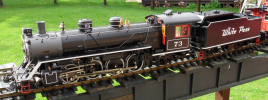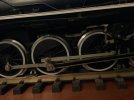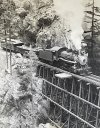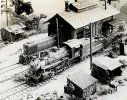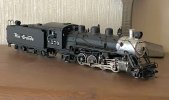Hi, and thanks for your continued interest.
I guess I’m coming at this from a different perspective than some other people here.
Although I have built and enjoyed a garden railway a few years ago, my main interest is scale modelling, having been in the hobby since the early 1960s, following US prototypes, and recently narrow gauge in particular.
I’ve done some work for Kalmbach in the 1980s including advertising and calendar subjects, attached are a couple of examples.
I can only say that if LGB had built the exact same White Pass engine back then , but in HOn3, it would not have sold well at all due to the obvious issue with driver diameter.
I also include a photo of a White pass 70 series locomotive produced back in 68 by United, a Japanese firm, and imported by PFM which came up on eBay a week ago. The dimensions are highly accurate, and that includes the correct scale drivers.Just compare with the LGB engine and it shows that way back then, the Japanese builders, left to their own devices, could produce a fine product that compares well with and in some respects beats current models.
Over the years I’ve seen perfectly good models trashed by what the manufacturer always presumed was the likely customer base because the model had some minor discrepancy or other. These things can get out of hand.
Scale modelling is a different market I guess, and fidelity to prototype is the main thing, whereas G scale has to appeal to a broader audience, and run well outside.
I
I guess it’s very much horses for courses, and finescale and outdoor railways don’t always mix, and can’t really be expected to.

